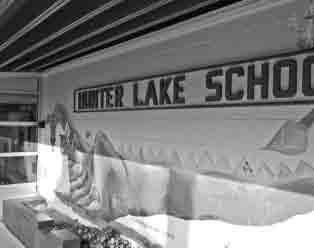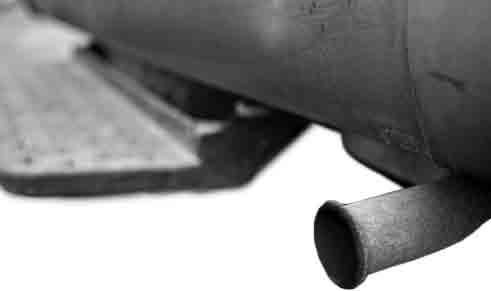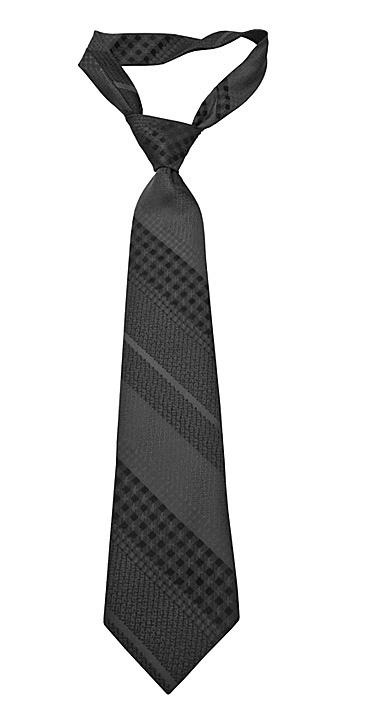
14 minute read
News
from June 7, 2012
Off message
Just after clinching the Republican presidential nomination last week, Mitt Romney returned to Nevada, a state he won in the February presidential caucuses, to celebrate. But his return was less than triumphal.
Advertisement
On May 29 on a CNN program, eccentric billionaire Donald Trump, a sometime Romney supporter, renewed his comments about President Obama’s birth certificate:
“You won’t report it, Wolf [Blitzer], but many people do not think it was authentic,” Trump said. “His mother was not in the hospital. There are many other things that came out and, frankly, if you would report it accurately, I think you’d probably get better ratings than you’re getting, which are pretty small.”
Later that day in Las Vegas, Romney appeared at a fundraiser on the same stage with Trump but stayed silent on Trump’s birtherism.
Also on that stage were Nevada Gov. Brian Sandoval, Lt. Gov. Brian Krolicki, and U.S. Sen. Dean Heller, all three also silent.
In the Las Vegas Review-Journal, Steve Sebelius criticized Krolicki, Sandoval and Heller for not counseling Romney to distance himself from Trump.
“They could have said it nicely, telling Romney that, as fellow Republicans, they support him,” Sebelius wrote. “That they’ll vote for him. And that they would go to literally any other place in Las Vegas. But not that building, not with that man.”
Around the nation headlines appeared such as this one in the Arizona Republic: “Romney clinches, gets upstaged by ‘birther’ Trump.”
In the Washington Post, Dana Milbank wrote, “The time has come for Mitt Romney to prove it once and for all: Is he or is he not a unicorn? Let me stipulate that I have no proof that Romney is a unicorn, and indeed I want to believe that he is not. But I haven’t seen proof of this because he has not released the original copy of his long-form birth certificate.”
The Milbank article was reprinted in the Chicago Tribune alongside a photo of Sandoval and Romney.
Syndicated columnist Jules Witcover wrote that Romney missed an irreplaceable chance, akin to Bill Clinton’s 1992 denunciation of rapper Sister Souljah for encouraging interracial killings or Barack Obama’s 2008 break with the Rev. Jeremiah Wright for denunciations of the United States.
Witcover wrote, “But he [Romney] declined, when confronted by reporters, to rebuff Mr. Trump, observing, ‘I don’t agree with all the people who support me. ... But I need to get 50.1 percent or more.’ Instead, he thanked Mr. Trump ‘for twisting the arms that it takes to bring a fundraiser together.’”
The Romney campaign responded by releasing his own birth certificate. That provoked a round of commentary on the fact that one of his parents was not born in the United States. His father, former Michigan governor and 1968 U.S. presidential candidate George Romney, was born in Mexico. That dispute further moved the campaign dialogue from Issues like the economy that Romney would have preferred to discuss.
Then the New Orleans Times Picayune reported that some of Romney’s potential running mates have their own birther problems.
“But, as Romney may learn as he winnows the field of candidates to serve as his running-mate, two of the individuals most often named as being under consideration—Louisiana Gov. Bobby Jindal and Florida Sen. Marco Rubio—have been targeted by a certain strain of birthers who contend that neither man is constitutionally eligible to serve as president or vice president because, while they were both born in the United States, their parents were not U.S. citizens at the time their sons were born.”
From coast to coast, the campaign discussion was on things Romney didn’t want it on.
— Dennis Myers
PHOTO/DENNIS MYERS
Early or late?
Long or short?
Last month, Washoe Assemblymember Pat Hickey announced a plan for camby paign finance changes at next Dennis Myers year’s legislature. Almost unnoticed among the proposed changes was a proposal not directly related to finance disclosure. Hickey said the state’s primary election should be moved back to its traditional place later in the year, though he did not propose a specific date. “By eliminating those extra months of campaigning, we will help save Nevadans their television mute buttons,” Hickey said. “In shortening the length of the campaign season, we might actually create an electorate that is actively engaged—rather than being turned off and tuned out—by the time November rolls around. By doing so, we might even make progress in restoring a measure of civility to campaigning, or at the very least, shorten the period we ‘make enemies of each other’in the dog days of summer, before we arrive in Carson City before the cold days of winter needing to make peace.” But Hickey faces substantial obstacles. The decision on a date is not likely to turn on issues of civility or voter engagement but on administration of elections. If all he needed was the support of his fellow legislators, Hickey would be in fat city. But he must also deal with objections to a later primary from county election officials.
Two years ago, the primary election was Nevada’s centennial primary. The state’s first primary was held on Sept. 6, 1910. That set a pattern. Every election year until 2006, with two exceptions, the primary for state offices was held in the first week of September. (In 1916, the state dropped the primary in favor of nominating conventions. And in 1954, the state primary was held in June as part of an effort to hold a 1956 presidential primary election.)
In 2005, the Nevada Legislature enacted a new primary date because county election officials said they needed the extra time to get ready for get ready for the general election. Some legislators were skeptical. They did not understand why in a computer age county clerks or registrars needed more time instead of less to set up an election. Nevertheless, they went along and the 2006 primary was held on Aug. 15, and in 2008 it was held on Aug. 12.
Many legislators and other elected officials disliked the earlier primary, and in 2009 Sen. William Raggio of Washoe County introduced legislation to move the date back to September. Instead, county officials used the bill to convince the lawmakers to move the date up even more, to June.
When the Raggio measure was being processed in committees, there seemed to be objections to almost any date. September was too late for the counties. July and August were summer months when turnout would be down. June was too early for candidates who had to pay for longer campaigns—and not just legislators felt that way.
The notion that summer months produced low turnout was not well substantiated by Nevada’s limited experience. Raggio aide Isaiah Price supplied figures that tended to go against the grain of assumptions. In August 2006, a nonpresidential year when turnout should have been at rock bottom, it was relatively high:
Assemblymember Pat Hickey Assembly GOP floor leader
At an early voting station at the UNR student union this week, a voter marked his electronic ballot.
September 2002 (midterm) 27.72 percent September 2004 (presidential) 29.16 percent August 2006 (midterm) 30.06 percent August 2008 (presidential) 17.97 percent
(These figures are artificially high because they use registered voters as a base number, not eligible voters. The actual turnout was much worse.)
Amajor sticking point dealt with the possibility of a recount of a primary election race. Depending on what race was involved, a recount—the county officials
No one’s home
said—could so consume election officials time during the 45 days between the first week of September and the first week of November that it would make it difficult for them to be ready in time for the general election—and probably impossible to mail general election absentee ballots to overseas voters in time.
“The primary election would be September 7,” Clark County voter registrar Larry Lomax told a legislative committee. “We canvass six working days after the election, which amounts to eight days because of the weekends. There is a three-day period where people can ask for a recount. Because of weekends, we are at 13 days after the primary election. Ballots cannot be printed until we have an official election result without a recount. Realistically, ballots cannot be printed until 42 days before the general election, which is within the time line of when the overseas ballots are to be in the mail. The quickest ballots can be printed, working 24 hours a day, seven days a week nonstop, is 11 days. We print 175,000 ballots with 305 versions. The 305 versions must be separated into 1,159 precincts. Our goal is to get the ballots in the mail 30 days before the election. Nevada statute says ballots should be in the mail 40 days prior to the election if possible. I agree that August elections are miserably hot. However, to get the ballots overseas, we need the August primary or an earlier date.”
In the end, the legislators reluctantly rejected July, August and September and went for June. It has proven to be gravy for incumbents, who are better able to endure the costs of a long campaign than challengers.
At the 2013 Nevada Legislature, Hickey will need some answers to the recount and overseas ballot problems if he is to succeed in restoring a late primary. Ω community where they have distractions, where they have the ability to reoffend and for people to offend them. … These kids are moving into a hostile neighborhood. This is not a neighborhood that’s welcoming them with open arms.”
Councilmember Dan Gustin was in attendance at the Council meeting on the home. The proposed facility would be in his Ward One. Gustin is not running for reelection and the decision may be made before his successor is elected. Candidates seeking to replace him are reluctant to second guess Gustin or other sitting members of the Council who have had the opportunity to hear a fuller range of evidence.
Candidate Troy Harsh said that while he’s “glad the outcry is there by the citizens,” he hopes the Council will “look at both sides of the issue and act appropriately.” He also said that so far he’s heard only the residents’views.
Candidate Jenny Brekhus also said she has not had full exposure to the details of the home. “Having said that, I have familiarity with the licensing and zoning approval of group homes. Nevada Revised Statutes preempts local authority in some respects in this area. In addition, there is case law … [I]n many of these instances cities do not have discretion to decide whether or not a certain residential use should be allowed. It rises to the level of a constitutional right. So the challenge for a community is to develop a land use and zoning framework that works within the parameters of local authority preemption to prevent land use conflict and preserve neighborhood quality of life.”
Other candidates did not respond or were unavailable. Ω
Troubled teens become political issue
At a May 23 hearing, the members of the Reno City Council heard nearly two hours of public comment on a group home for troubled teens before moving to delay permits until the Council can revisit the issue early this month. The issue may be settled then, or it may hang on for while, in which case candidates for the Council will become more engaged with it. Southwest Reno residents aired a laundry list of concerns over the residential drug treatment facility, and they dominated the extended discussion with criticism of everything from congestion to zoning violations. Most, however, focused on the group home’s proximity to schools and public parks. One resident recounted a friend’s experiences with drug-motivated burglaries. Another urged the Council’s caution by suggesting that the proposed location was infested with mold. No less than three residents cited the fact that the neighborhood already has a group home just down the block. “No one is for this group home,” claimed Hunter Lake Elementary teacher Susan Daly. “My concern is the location alone. It’s illogical. It’s impractical. It’s a ridiculous crock of cranberries what they want to do with that house.” Reno-based Quest Counseling had hoped to open the home sometime this month. Quest executive director Denise Everett said it would be the only facility of its kind in Washoe County and the first to offer youth rehabilitation services in the area since economic difficulties forced the closure of a Sun Valleybased facility in 2009.
“We have absolutely no intention of accepting kids that have a history by of violence or that are strongly gangJames DeHaven and Dennis Myers affiliated,” Everett said. “We really want to focus on kids that have made a series of bad decisions but have a motivation for recovery.” Group therapy and individual counseling are the major components of the group home’s three-to-four month treatment program. Quest plans to offer up to 10 beds for teens struggling with drugs, alcohol or mental health issues, but once there, they will “do what other kids do.” They’ll eat, sleep and watch TV. They’ll have access to cooking lessons and a garden in the back. Everett said fears over drug dealing, congestion and neighborhood parking are exaggerated. She hastens to say that no resident— regardless of probationary or parole status—will be allowed to leave the premises unsupervised. “The kids are going to be supervised 24 hours a day, seven days a week,” Everett said, adding that residents will be bused to outpatient therapy on a managed basis, but that they will not be allowed to have cars or to leave the building. “And they’ll have no money. It’ll be the last place a drug dealer wants to go. … Our kids are not going to be wandering around the neighborhood.” Everett also quoted Reno Police Deputy Chief Mike Whan, who told a neighborhood meeting either this month that the opening of similar facilities in other parts of Reno had either no impact or a “very limited” impact on call volume. Ashton Caselli, who lives within blocks of the proposed location, told councilmembers that this was not a typical NIMBY(not in my backyard) issue. For him, group homes and other drug rehabilitation centers “don’t belong in any school’s backyard.” In the two months since the group home was first announced, Caselli has promoted efforts to—as he puts it—keep “drug dealers and other criminals” out of his neighborhood. He’s led demonstrations, circulated petitions and has a blog on efforts to stymie the facility. “These are kids that are already delinquent defenders,” Caselli said, “If these kids want a chance at success they cannot be at the heart of a

PHOTO/D. BRIAN BURGHART
Hunter Lake School has become an issue in the city permitting for a group home for teens.
Treat yourself to gift certificates up to 75% OFF!

Take a breath
Washoe County Health District released recommendations for addressing “ozone season,” in which heat and vehicle emissions create high levels of ozone. The release states, “Ground-level ozone forms when VOCs [volatile organic compounds] and nitrogen oxides (NOx) mix in the air then react chemically in the presence of sunlight.”Ozone can “irritate the respiratory system … inflame the lining of the lungs and reduce lung function.” Asthmatics and people with chronic obstructive pulmonary disease are especially affected by the elevated ozone levels in the summer.
The health district recommends reducing the need to drive gas vehicles during the day, as well as “powered lawn equipment, solvents, and charcoal lighter fluid on days in which the Air Quality Index (AQI) for Ozone reaches the upper moderate range, or higher.” The AQI is shared by local media outlets, and can also be found by calling 7854110. More information about WCHD’s Air Quality Management Division can be found at www.washoecounty.us/health/aqm/home.html.
Ozone has a negative impact on human bodies, but it also ravages ecosystems. In California, the ozone level from the Los Angeles smog is harming the Sequoia National Park forest, putting the ancient trees at risk for drought and pests. The park is one of 52 parks—along with the Joshua Tree National Park and the Great Smoky Mountains National Park in North Carolina—constantly monitored for ozone levels. According to Sci-Tech-Today, Sequoia and neighboring park Kings Canyon are at the highest risk.
Happy trails
The California Trail Interpretive Center opened on June 2 in Elko as part of the 2012 Trail Days. The center, a project by the Bureau of Land Management, will feature art exhibits pertaining to the journeys taken along the California Trail.
The theme of this year’s Trail Days was “Commerce on the Trail.” Learn more about the new center and Trail Days celebrations at www.blm.gov/cv5c.
—Ashley Hennefer
ashleyh@newsreview.com
www.newsreview.com


GIFT CERTIFICATES FROM RESTAURANTS, BARS, CLUBS, TATTOO, RETAIL, THEATER, SALONS, SPAS, GOLF, VACATIONS & MORE ECO-EVENT
The Nevada Conservation League will host the inaugural Reno Green Tie event on June 14. The event will honor Ormat Technologies, which owns the geothermal plant north of Pleasant Valley, and Dr. Jason Geddes, environmental services administrator for the city of Reno. Larry Johnson, president of the Coalition for Nevada’s Wildlife, is the guest speaker. 5:30-7:30 p.m., Terry Lee Wells Nevada Discovery Museum, 490 South Center St. For more information or to reserve tickets, visit www.greentietickets.org.
Got an eco-event? Contact ashleyh@newsreview.com. Visit www.facebook.com/RNRGreen for more.








